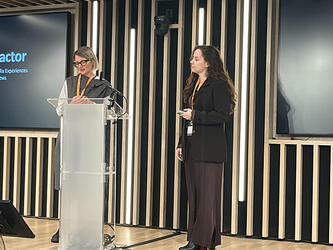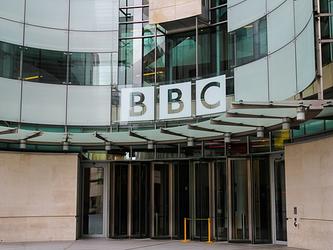Public interest: Data and the BBC
When Tim Davie took up his role as the 17th director general of the BBC in September 2020, he said in his introductory speech: “The future of a universal BBC can no longer be taken for granted. We have no inalienable right to exist. We are only as good as the value we deliver our audiences, our customers.”
He added: “For the avoidance of doubt, I do not want a subscription BBC that serves the few.”
The manifesto underlined the challenges faced by the public service broadcaster – one major one being funding: the government has said the licence fee will be reviewed before the current charter ends in 2027.
With a diverse media landscape offering more choice to the public than ever before, and the rise of on-demand television, audio and podcasts through the likes of Netflix, Spotify and Amazon Prime Video, the ‘Beeb’ no longer has the monopoly on the attention of British audiences in the way it used to.
The challenge is clear for the organisation’s director of audiences, Nick North. “Our purpose is to enable the BBC to do more for all audiences – to make sure that the decisions being made and the way data is being used to enhance audiences’ expectations of the BBC is optimised – which is to say that all licence-fee payers are getting enough value from the BBC.”
No one experience of the BBC is quite the same. “Young families using CBeebies, older people with linear TV, young adults turning to iPlayer first, sports fans, music fans, cooking fans… It’s literally a cradle-to-grave relationship,” says North.
“Trying to understand that audience – and, most particularly, to understand where we don’t do enough for audiences – is at the heart of what our role is about; and where we don’t do enough, to try to unlock insight to help the organisation to do more for that audience.”
Of course, value can be a nebulous concept to measure, and that is at the centre of the work of the audiences team. It has developed a performance framework to establish a benchmark for success for different audiences across the BBC’s wide range of services, from TV channels and radio stations to online services such as its on-demand service, BBC iPlayer.
Defining value
Success in media is traditionally measured by audience ratings – and that’s still important; the record 12.8 million viewers for the final episode of BBC One’s police drama Line of Duty underline the importance of flagship programmes to draw big numbers. But what’s really key for the BBC, says North, is to make sure it does enough for everyone.
To do that, the broadcaster needed to understand the ‘threshold for value’ over which it can feel confident it is delivering a valuable service for which people feel it is worth paying the licence fee.
While it invests significantly in traditional industry currencies such as BARB and RAJAR, and the new UK Online Measurement (UKOM), these offer a single perspective on the audience, and don’t answer the value question across the gamut of the BBC. “They tell us how many people are watching or listening but not how many people are getting value across our range of services,” explains North.
A few years ago, the organisation invested in its own measurement of the audience across all media, via a panel set up by Ipsos. It covers people’s viewing, listening and online behaviour within a single source, and has helped the BBC to understand across its various services which people consume a lot of its content often, and which consume very little of it rarely. This means that it can now pinpoint those for whom it may be able to do more. For example, among some light TV viewers, some might be heavy radio listeners.
“Being able to identify those audiences, across all of our services, for whom we do more than enough and not enough, helped us develop a sense of where a threshold of ‘good’ lay, and orient our success measures around this,” says North.
“Rather than thinking about average audiences and total reach, we’re interested in the number of people who are getting enough from the BBC. They’re using the BBC for a number of days a week across a range of different services, meeting a range of needs. That is our measure of success. That has been critical to the development of this measurement framework, and something we were previously unable to do.”
Shift towards data
Underpinning these changes is the BBC’s generation of far more first-party data from digital services such as iPlayer. With viewers signing in to watch TV programmes when it suits them on the streaming platform, and listeners accessing live radio broadcasts, audio on-demand and podcasts on BBC Sounds, the broadcaster is sitting on a dataset of 45m accounts.
The organisation’s data team, led by head of data David Teague, now spans 45 people across roles including marketing scientists, experimentation and optimisation teams, who support multivariate testing, and editorial analysts.
North says the audiences team is essentially becoming “the custodian of the audience data within the BBC” because of the data that “exploded” in volume when it launched account sign-in. It offers a high level of insight into people’s behaviour while they’re using the online services, such as iPlayer. “Thinking about how we make best use of that data, but integrate that within our broader understanding of the audience, has really profoundly changed the scope of what we can do,” he explains.
For example, beyond the audience insights emerging from the data, it can be used in user segmentations, clustering and other methods to inform the products themselves. By feeding the products with data in this way, the aim is that products will become more personalised – for example, informing customised recommendations of what to watch next.
This shift towards a more data-led organisation is driving a change in the audiences team’s investment in research services. North says it is spending more on analytical and data-science capabilities to ensure it’s making the best use of the data it has available.
While the BBC is spending less on “classic ad-hoc research” than it once did, it is still investing heavily in tracking its brand and reputation.
“Those things are very important to us, and we look to do that in the best possible way,” says North. “But we are also making more use of data, with econometric analysis or deeper analysis of our brand research. We’re investing in the analysis of our primary research more than we have done in the past.”
Cross-disciplinary working
Another impact of the influence of different data sources has been the need to work more closely together across disciplines. This was key to the organisation’s launch of BBC Sounds in 2018, which won the audiences division the in-house team of the year award at the 2020 MRS Awards.
BBC Sounds was conceived by the research team, which described a platform that would identify what listeners wanted. Analytics and data science are used to understand the audience and influence where they spend time – for example, by informing the service’s recommendations engine.
Alison Winter, head of audiences for radio and education, says the work of analysts and data scientists is “critical” for Sounds.
Quite early on, she explains, the team realised that it needed to work with data scientists and analysts much more closely to help the business contextualise their “side of the story” – that is, detail on what is happening inside the product itself.
Researchers can then “use datasets, ask the audience, and fill in gaps” to understand what people are doing outside of the platform. This is so important in today’s landscape, where, as Winter puts it, the BBC is competing with “global competitors who have huge audiences and huge resources, and we need to be able to look outside and understand what’s going on more than ever before”.
Additionally, planners conducted market analysis, exploring what other forms of audio content were particularly popular by looking at sources such as the Apple podcast chart.
“All of us working together are able to help build the best product and content on Sounds,” says Winter. “It has not always been easy, but we have more impact when we work as a team.”
Working more closely has also helped people gain exposure to other disciplines and aided their career development, as well as encouraging the borrowing of ideas – for example, taking a technique the analysts used and applying it to linear data to explore genres.
The BBC is now testing how to apply the cross-disciplinary approach used within Sounds to other areas.
Role of research agencies
One recent project on mainstream audiences provides an example of the sorts of work with which agencies can help the BBC, says North.
The research focused on the issue of social class and audiences that would be categorised as ‘C2DE’ – as, says North, the organisation has observed that some audiences within that group have “drifted away from the BBC or we’ve drifted away from them”.
The research brought together multiple sources of information to shape decisions, including commissioning and tone of voice within the newsroom.
North says: “We still spend a lot of money on research, but as we start to spend less, it becomes more important to gain more value from it, to find the multiplicability of the insight in different contexts, and to make use of that – in conjunction with other observations of behaviour that we have from data and analytics – and bring that together into a more coherent story.”
Agencies play a key role here, adds North. “A lot of the time is spent figuring out what the story is from these multiple audience perspectives. There’s a role for research companies to evolve into helping us see the truth through these different perspectives – rather than being primary research providers only.”
Listen carefully
The BBC recently carried out research focused on factual audio content, which could be used to inform Radio 4 and BBC Sounds.
“Sounds is primarily aimed at younger audiences because our linear networks tend to skew a bit older, and Sounds is trying to keep up to date with the shifting audio patterns we see in younger listeners,” says Winter.
In on-demand audio, which is particularly popular among younger audiences, there is a lot of genre blending, with factual and entertainment packaged together in a podcast.
Winter explains: “There’s often different tonality and different approaches in the on-demand audio space than what you might find on linear radio stations.”
The audiences team wanted to understand what people felt about factual audio, what types of content they listen to, and whether they think different providers are better associated with it.
To understand what the market looks like, it blended research with semiotics to understand the world of factual intelligent content, including the characteristics or signifiers, particularly among providers that are more modern or more accessible to young audiences.
Similar to how Radio 4 “set the way” for factual content in the past, says Winter, the aim through this research is “that the BBC could do that in audio for young audiences via our understanding of what it is they want, and what factual formats look like now in the digital audio landscape”.
The BBC worked with DRG on quantitative research and Basis for semiotics for the project.
This article was first published in the July issue of Impact.

We hope you enjoyed this article.
Research Live is published by MRS.
The Market Research Society (MRS) exists to promote and protect the research sector, showcasing how research delivers impact for businesses and government.
Members of MRS enjoy many benefits including tailoured policy guidance, discounts on training and conferences, and access to member-only content.
For example, there's an archive of winning case studies from over a decade of MRS Awards.
Find out more about the benefits of joining MRS here.














0 Comments